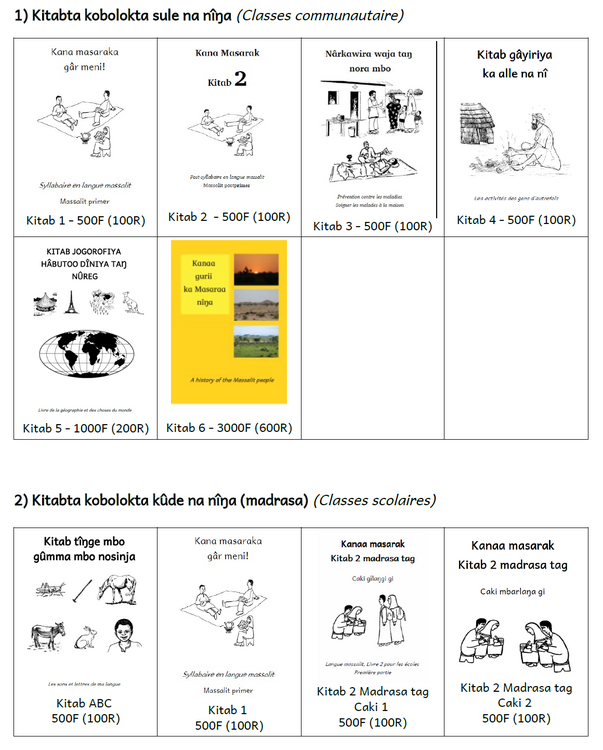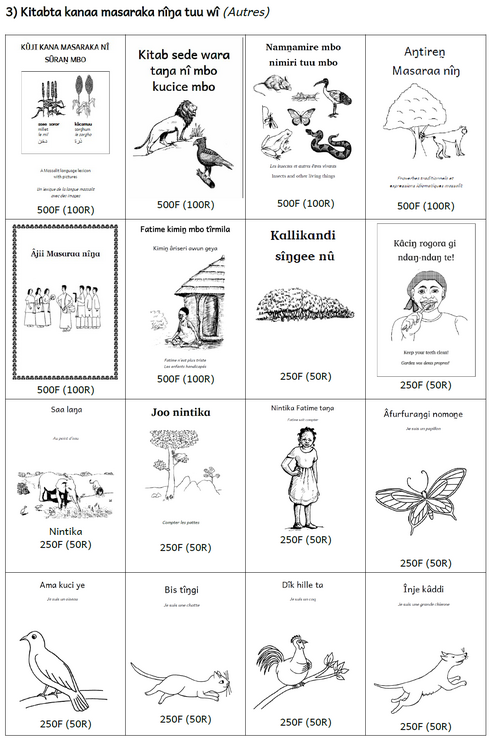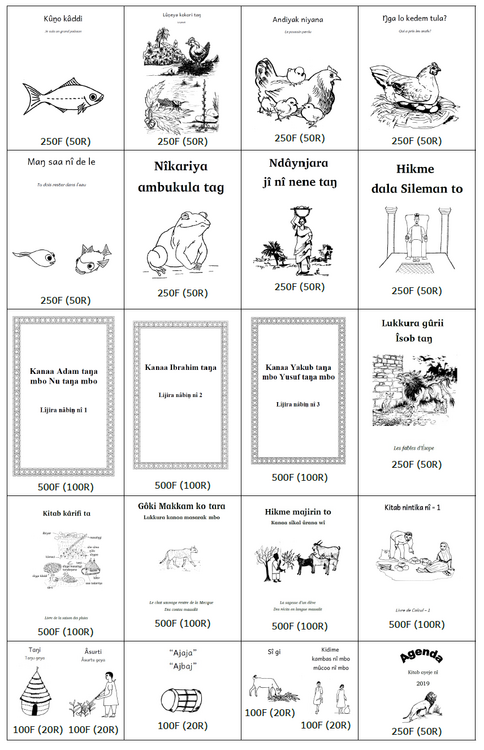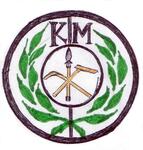Here are all our books in PDF format.
You can read them online or save them to your computer or phone.
A) CLASS BOOKS (for adults or community classes)
These books are used in community classes for adults and young people.
Book 1 – Kanaa masaraka gâr meni! (Let’s read Massalit)
Book 2 - Kanaa masarak Kitab 2 (Massalit Book 2)
Book 3 - Nârkawira waja taŋ nora mbo (Health)
Book 4 - Kitab gâyiriya kaa alle na nî (Culture)
Book 5 - Kitab jogorofiya hâbutoo dîniya taŋ nûreg (Geography of the world)
Book 6 - Kanaa gurii kaa Masaraa nîŋa (History of the Massalit people)
(also available on Amazon.com)
B) CLASS BOOKS (for schoolchildren)
These books are used in primary school classes.
Alphabet Book - Kitab tîŋge mbo gûmma mbo nosinja (The sounds and letters of my language)
Book 1 - Kanaa masaraka gâr meni ! (Let’s read Massalit!)
Book 2 - Kanaa masarak Kitab 2 madrasa tag (Caki 1) (Massalit Book 2 for schools, Part 1)
C) DICTIONARIES AND LEXICONS
These are picture dictionaries with pictures and words in Massalit, English, French and Arabic.
Kûji kanaa masaraka nî sûran̰ mbo (Picture dictionary)
Kitab sede wara taŋa nî mbo kucice mbo (Wild animals and birds)
D) MASSALIT LANGUAGE AND CULTURE
Aŋtiren̰ Masaraa nîŋ (Proverbs and idiomatic expressions)
N̰amn̰amire mbo nimiri tuu mbo (Insects and other living things)
Kitab kârifi ta (Rainy season activities) (**NEW**)
Gôki Makkam ko tara (Massalit stories) (**NEW**)
Hikme majirin to (Massalit stories) (**NEW**)
E) COUNTING BOOKS
Nintika Fatime taŋa (Fatime can count)
F) EASY READERS
Âfurfuraŋgi nomon̰e (I am a butterfly)
Bîs tîŋgi (I am a mother cat)
Dîk hille ta (I am a rooster)
Kûn̰o kâddi (I am a big fish)
Âsurtu geya (Working the field)
Kidime kambas nî mbo mûcoo nî mbo (The traditional work of men and women)
Kallikandi sîŋgee nû (The importance of trees)
Kâciŋ rogora gi ndaŋ-ndaŋ te! (Keep your teeth clean!)
G) SHORT STORIES
Andiyak niyana (The lost chick)
Ŋga lo kedem tula? (Who took the eggs?)
Maŋ saa nî de le (You belong in the water)
Nîkariya ambukula tag (The frog’s question)
Ndâynjara jî nî nene taŋ (The milk seller’s dream)
Hikme dala Sileman to (The wisdom of King Solomon)
Lukkura gûrii Îsob taŋ (Aesop’s Fables) (**NEW**)
Fatime kimin̰ mbo tîrmila (Fatime is not sad anymore) (children with disabilities, polio)
Picture books to read to children (Class 1):
Gêra kârifi taŋa (The coming of the rainy season)
Kima bûrtu niye gi (The child was walking)
Kima nôroci (The child who was trapping)
Kima nuccumari (The child who threw stones)
Kima sukkar mo wâyina (The child who went for sugar)
Nduŋuriya Direge taŋ (Direge’s work)
Njeba waldama ta (A letter from a friend)
Zâgiyem aka (I went to the garden)
Picture books to read to children (Class 2):
Âsurtu geya (Work in the fields)
Giyeya Adam tag bûrtim (Adam’s walk)
Kallikandi Hawaye ta (Hawaye’s kindness)
Kallikandi n̰êti ta (Nutrition)
Kima nârinji (The child who meddled)
Kûrdi meŋgi to (The nest of the hamerkop)
Nârkawira kima ta (Child safety)
Nduŋuriya Tûsa taŋ (Tusa’s work)
Rugura toŋo na (Household chores)
H) THE LIVES OF THE PROPHETS
Kanaa Adam taŋ mbo Nu taŋa mbo (Adam and Noah)
Kanaa Yakub mbo Yusuf taŋa mbo (Jacob and Joseph)
I) BOOKS OF INFORMATION
Kitab kallikandi kânu nûre gi (Inspiring People/Biographies) (**NEW**)
Kitab muwasalatta dîniya taŋa nî (Vehicles of the World) (**NEW**)
Sede (Wild Animals) (or printed version on Amazon.com) (**NEW**)
N̰amn̰amire (Insects) (or printed version on Amazon.com) (**NEW**)
Chaye rayŋgu ŋgondo ken igegiyoŋ? (How is green tea made?) (or printed version on Amazon.com) (**NEW**)
I) CALENDARS AND DIARIES



